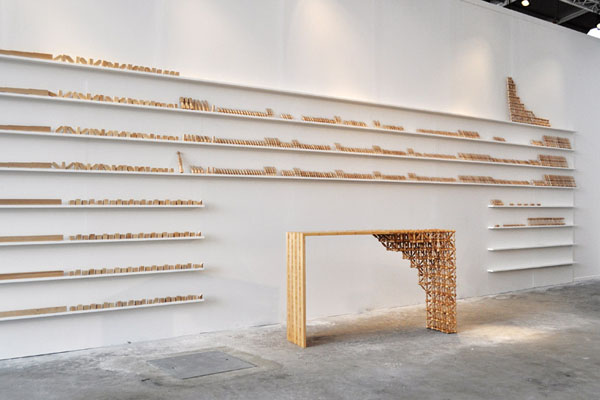‘Gradient Mashrabiya’ is a project commissioned by Lebanon’s Carwan Gallery to designers Katharina Mischer and Thomas Traxler of Studio Mischer’Traxler. The designers teamed up with an expert woodworker in Lebanon to create a sideboard that shows stages of process, starting from chunks of wood and evolving into detailed latticework. The aim of the project was to redefine the constructive system of the traditional mashrabiyas which is basically delicate wooden window screens often found in Middle Eastern architecture. More than 650 pieces of oak wood were put together through the process of lathing. The sideboard table highlights a high level of craftsmanship and the project exposes the intricate detailing involved in the production process with a complex network unique to wooden sections.
“We focused on exposing the many steps of production, to make the craftsman’s work visible and understandable to the observer. The result is composed of a network of more than 650 distinct pieces of manually carved wood. From rectangular slats to refined decorative elements, all stages are visible within the one object, which becomes increasingly more defined, detailed, and fragile, but at the same time progressively more three-dimensional.” – says designers of Mischer’Traxler









